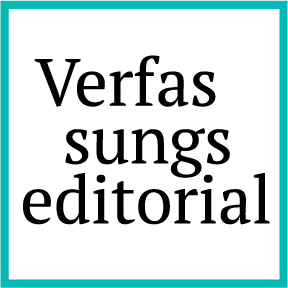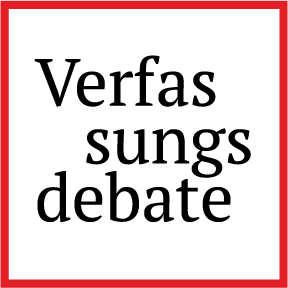The Human Factor in EU Law
My work emphasizes the human factor as a critical method of analysis for legal scholars specializing in European Union (EU) law. This approach aims to critically analyse the evolution of the rules governing the Court of Justice of the EU (CJEU) shedding light on its composition, organization, and functioning, while also proposing reform initiatives. Some of these reforms prioritize greater transparency within the CJEU. For instance, recommendations concerning the role of the Advocate General are grounded in my theoretical definition of the function: a legal thinker serving the judicial decision-making process.
By focusing on the human factor in EU law, this method also reveals how individuals are positioned within the institution, helping to identify potential phenomena of invisibility or exclusion in decision making processes. A key part of this research agenda, still under development, involves crafting legal portraits of the EU lawyers, judges and scholars focusing on their perception of the institution and their influence on it.
The human factor as a method of legal analysis in EU law
Researching the human factor in EU law may seem self-evident: after all, law is a system of rules established (primarily) by humans and for humans, as Olivier Jouanjan reminds us. This remains true even as artificial intelligence (AI) and environmental considerations increasingly shape both the creation and application of legal norms. In the context of EU law, the focus on the human dimension has expanded beyond existing studies in areas such as European immigration and asylum law (Marie-Laure Basilien-Gainche). A new research agenda is emerging, centred on the pivotal role of individuals and their lived experiences, as highlighted by scholars like Loïc Azoulai.
My approach also places individuals at the centre of the analysis of EU law, but from a different perspective. Rather than focusing on the effects of the law on individuals, it examines the influence of individuals on the production of that law. At the heart of this dynamic – and emblematic of the strength of integration through law – lies the CJEU which remains a crucial subject of study. This perspective acknowledges, as Julio Baquero Cruz observes, that the CJEU’s jurisprudence represents only the tip of the iceberg of European litigation. Furthermore, it is the “local meanings” and applications of EU law that reveal the diversity and complexity of European integration (Afroditi Marketou).
This approach also differs from the work of EU historians and sociologists such as Vera Fritz or Julie Bailleux, who have shown in their respective work the professional trajectories and the relevance of professional networks of lawyers. Instead, it adopts a distinctly “legal method” to study these individuals. The focus is primarily on the form that law takes, namely the normative texts organizing the CJEU. That includes treaties, protocols, statutes, rules of procedure, and instructions to litigants. It examines their evolution, their articulation, and their interpretation, as well as the jurisprudence that represents the tangible output of the CJEU’s judicial work. This approach also draws on legal discourses produced by legal actors within the field, including analytical legal articles, opinions of Advocates General, interviews with legal practitioners, conferences, or legal lectures. This method views rules as both frameworks of constraint and potential resources. In this sense, constraints often appear, if not as drivers of creativity – as evidenced by numerous artistic movements or architecture as the ultimate art of constraint – then as catalysts for creativity (Michael Koskas).
Rather than relying on fieldwork, in-situ immersion, or interviews as primary research tools, this approach uses them as sources of intuition or complementary insights. These inputs enrich the understanding of legal texts and the human actors shaping them.
The critical arrangement of the CJEU
Just as one tidies a cluttered cupboard to “see things more clearly”, similarly, organizing knowledge about the CJEU can serve to better understand it. This descriptive approach, rooted in the systematic mindset cultivated in French universities, aims to explain a powerful but little-known and little-understood institution. In my view, achieving a deeper understanding of the institution seems essential when reflecting on the authority of the CJEU – an institution whose legitimacy is inherently fragile. This endeavour began during my doctoral research on the role of the Advocate General at the CJEU, which I completed in 2010. This culminated in the publication of a book in 2020 titled The Court of Justice of the European Union. The title sought, in its simplicity, to reflect the structured and ordered nature of the project. The book systematizes the normative approach, based on several models of justice.
In addition to providing a structured description and explanation, this work addresses various questions with different objectives, such as examining the issue of its institutional autonomy. The history of the CJEU is one of a gradual loss of institutional autonomy, whether in amending its Rules of Procedure or in budgetary matters. However, the current Rules of Procedure still bear traces of the original rules, adopted when the European Coal and Steal Community (ECSC) Court (1952-1957) had autonomy in this area. Moreover, the amendment of the Statute grants it a genuine – albeit unofficial – power of initiative. Practice demonstrates that the Commission, the Council, or even the European Parliament in budgetary matters have been able to influence both procedural and internal organizational rules (see also Christopher Krenn). The texts and practices also reveal a conflation between the Court of Justice, as a jurisdiction, and the CJEU as an institution. In fact, it is the Court of Justice – the highest jurisdiction within the CJEU – rather than the lower General Court, that takes decisions on behalf of the entire institution.
This research on the CJEU also has a critical ambition, enabling the formulation of reform proposals. As highlighted by Michael Bobek, if one cannot influence what a judge will say or do, it is possible to reflect on the procedures for their appointment, which subsequently shape the profiles of the men and women in these roles. This line of inquiry, long underexplored by legal scholars, has gained attention very recently on platforms like EU Law Live. In the name of transparency – an essential counterbalance to legitimacy based on expertise – I have welcomed the 2010 reform that led to the creation of the so-called “255 Committee,” tasked with evaluating the suitability of candidates for the positions of judge and Advocate General. However, like other scholars such as Alberto Alemanno, I have regretted the lack of transparency within this Committee’s workings and the limited openness of national procedures for selecting candidates. These shortcomings highlight the need for further reforms to strengthen both the legitimacy and accountability of the appointment process.
My approach to the study of the Advocate General is openly normative and prescriptive (see here in French and here in English). Assuming that the Advocate General now functions intimately and culturally alongside the Court, my approach relies on a definition of the Advocate General as a legal thinker serving the judicial decision-making process. I have constructed this definition, which might be described as essentialist, through a deductive analysis of the texts that establish and organize the role, supplemented by field observations and several interviews. This definition is then tested against current rules and practices, with each practice or rule assessed in light of this definition. For example, I critique both the dual system of permanent and rotating positions and the exclusion of Advocates General from the election of the Court’s President as this system and this exclusion are not justified by the core function of the Advocate General. Finally, I critique the occasionally overly academic nature of certain opinions. This critique also aims to align institutional AG roles more closely with its core function which is to serve the judicial decision-making process.
The positioning of individuals within (and outside) the CJEU
Investigating an institution such as the Court reveals the dynamics of any group organization, where different roles for individuals and spaces for their interaction highlight positions of power, centrality versus marginalization, or visibility versus invisibility. A closer look at the CJEU highlights how Advocates General occupy a unique position with great visibility despite being at the margins of the decision-making process. In contrast, the reporting judge, a central figure in the decision-making process, has their work obscured by the secrecy of deliberations. This creates a disparity in terms of influence and visibility between judges and Advocates General, whose opinions, while not binding, are translated into all official languages and frequently cited by legal scholars and practitioners.
Regarding exclusion, it is important to mention what can be referred to as “the Sorbonne December 6, 2022, cathartic moment”. During a conference organized by a French Interdisciplinary Research Group on the EU “EuroLab” at the Sorbonne University in Paris on “What Makes a Good European Judge?” , two legal scholars, Loïc Azoulai and Laurence Burgorgue-Larsen, shared their experience of the French selection process for candidates proposed for the positions of Advocate General at the CJEU and judge at the ECHR, respectively. What happened during this moment? The individual case, with its emotions, was expressed within an academic setting, thereby providing meaning and contributing to scientific knowledge. It is a narrative of those excluded from the great names in the history of European integration (regardless of the great impact of their research). The history, and more specifically, the legal history, mostly highlights the names of those, who reach the highest positions. EU law places little importance on alternative narratives of European construction (for an alternative approach, see EU Law Stories). These narratives – and especially Azoulai’s account regarding EU law – represent a turning point for EU law research. By highlighting an individual’s journey, a life experience also serves legal research in offering a human and emotional perspective.
The quest for meaning is central to the human factor. What meaning can be given to research in European Union law? I do not offer a universal answer, but I do believe that each individual story contains a form of universality. A person was born carrying a family history, but even more so, a history of humanity and their relationship with the world around them. To enter the humanity of law is thus to return to the essence of the world. And it is possible to do so through the tools and methods offered by law. To echo the oral comment made by L. Burgorgue-Larsen, this suspended moment was likely a cathartic one for the key protagonists. I also believe it was a cathartic moment for the methods of studying EU law: the audience collectively realized that justice belongs to those who contribute to it, and that Europe needs individuals capable of fulfilling such a task. Furthermore, it demonstrates that the analysis of EU law cannot only rely solely on the more visible individuals, but must also include the stories of those who are less visible and marginalized.
Drawing the legal portraits of the EU lawyers, judges and Advocates General
In order to refine our critical understanding of the CJEU and the positioning of its actors, another potential line of research is to draw legal portraits of the actors in European Union law. This is a research agenda that should be systematized and aligns with work already done by EU historians, sociologists and political scientists, as well as recent contributions by legal scholars (eg: Italian influence on European Law – Judges and Advocates General – 1952-2000). The idea of drawing their portrait, which would be a “legal” portrait, since humans, through law, “constantly tell themselves stories, perhaps to cope with a reality that imposes itself on them, but to whose construction they also contribute” (Lauréline Fontaine).
For example, the portrait of Maurice Lagrange (1900-1986), who served as the very first Advocate General during the Court’s founding years, shows the persistence of a number of myths among EU law scholars regarding foundational rulings on supremacy or direct effect, or regarding France’s role in the institution and functioning of the Court. This biographical approach is doubly critical: it challenges an idealized portrayal of the Court by incorporating Maurice Lagrange’s Vichy past and anti-Semitic positions into the analysis, while also addressing an overly politicized perspective on the Court, as explained by Michel Mangenot. This “legal portraiture” can focus on other major actors in European Union law, such as well-known Presidents of the CJEU, but should also focus on more minor characters of EU law institutions. Additionally, as more portraits of men rather than women jurists have already emerged in European legal scholarship, I have proposed following my co-authored blog with Fernanda Nicola on Rising Gender Disparity at the CJEU, that more portraits of women legal experts in the EU should be pictured. It is necessary to bring women to the forefront of the knowledge of European law, in a logic of democratization and inclusion.
The central point of focusing on the human factor is to show how the persons in question position themselves within the institution, or more precisely, how they see and perceive their institution of affiliation. I start from the assumption that the way they publicly envision the institution necessarily contributes to shaping the institution in the direction they describe. Furthermore, I consider that their public statements, despite being subjective, allows the researchers for a better understanding of the institution itself. Thus, it is the public character of the individual, as they present themselves that becomes the “legally” exploitable material by the researcher. The goal is indeed to create legal portraits and collect personal narratives. Not to idealize those who are legal experts specializing in European Union law, but rather to draw concrete and realistic portraits that acknowledge both their merits and flaws as part of the human experience.



